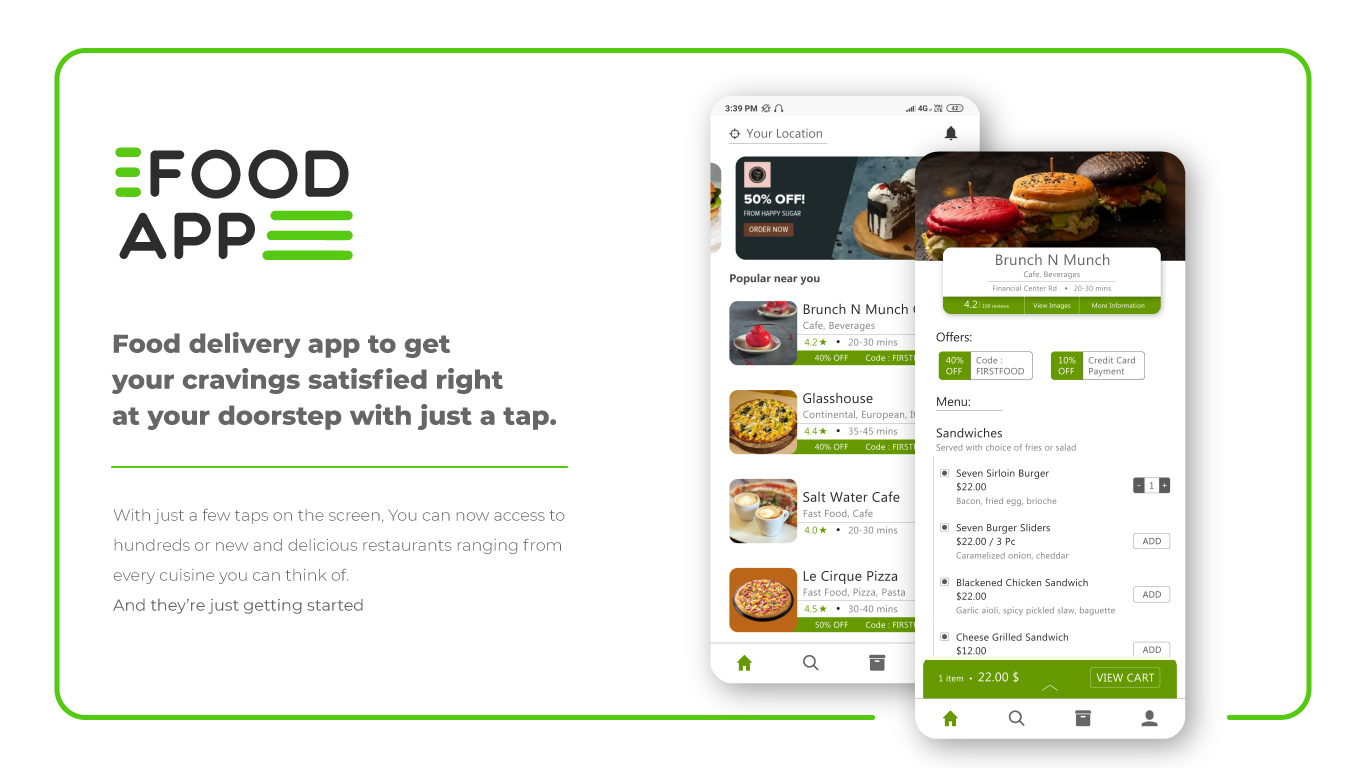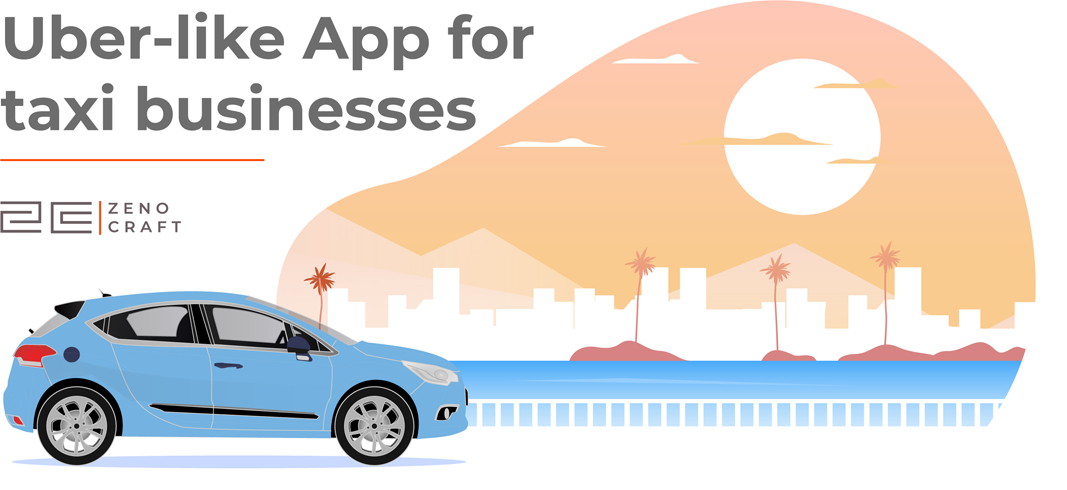With the advent of the digital era, businesses are turning digital and making the lives of people easier, faster, and hassle-free. Nowadays people barely have any time from their busy schedule and daily routines. Therefore, it is obvious that they look for instant solutions at their doorstep at reasonable prices.
Here the beauty of on-demand mobile apps comes into play. You can get everything you need by just a simple tap on your phone, like taxi, movie tickets, food, hotel booking and what not. This is one of the reasons why every business is now heading towards mobile app development.
Are you planning to develop on-demand food ordering app? If yes, Zenocraft is the best option for you. They have a highly skilled and experienced team to execute your project and achieve the desired results.
You need to know the essential features to build an extraordinary app for your food business before developing an on-demand food ordering app.
Here are the top essential features :
1. Push Notifications
Nowadays online food ordering is growing at a tremendous rate, it is an obvious thing to have more than one food delivery app on your smartphone. To stay ahead of your competitors and create visibility, sending push notifications is the best way. It helps businesses to stay connected with the customers. These messages are very helpful in conveying all kinds of information such as discounts, offers, location-based order dropped messages and so on.
You should ensure that your notifications must add value to the users rather than a plain commercial message. Always try to manage push notifications in such a way that they help your business app grow substantially. You should constantly engage your potential customers and notify them about discounts, special offers, and loyalty programs. By doing this, you can quickly grab customer attention and engage them.
2. Discount/Rewards, Cashback and loyalty programs
Discounts and special offers are the best way to attract more customers to your food delivery app. You should regularly offer great discounts to engage customers. According to the study, around 40% of users use a food ordering app to look for discounts and cashback, while 25% of users use these apps just to earn loyalty points.
It is critical to draw in potential customers to win brand loyalty than to create brand awareness. This is the major reason why big companies pay more attention to their loyalty points. For example, Starbucks effectively expanded its sales by 80% when they launched loyalty programs.
3. Real time GPS tracking of Food delivery
Real time GPS tracking is one of the most essential features of food delivery apps. This feature enables customers to track the location of their food through real-time GPS. The main purpose of GPS is to offer two-way tracking and functioning. It helps to recognize the user’s location to deliver the food. As soon as the area is confirmed, users can easily track the progress of the order and movement of the delivery personnel.
This feature is used by the leading food delivery apps to offer the best experience to the customers. A few of the great APIs for this feature include Google Maps, Here maps, or Waze’s Navigation. For example, Uber uses Google Maps on all the platforms.
4. Easy Payment Options
If you see from a business owner’s perspective, payments play a significant role in every business. Though it is the last process of the order placement, if a customer faces any minor/major problem then they won’t ever try again. Therefore, it is very important to make the payment procedure exceedingly productive and simple to use. Also, a customer must have all the payment options listed in your on-demand food delivery app. They can use the best of their choice.
You can incorporate all the payment gateways or mobile wallet app services that are available in the market such as Google Pay, PayPal, Amazon Pay, iOS Wallet, Stripe, Credit/Debit Card, Online Banking and Cash On Delivery (COD) alternatives. You can likewise offer promo or voucher code usage from a similar page.
5. Social Media Integration.
There’s no doubt that in the past few years, social media has contributed a lot when it comes to online marketing. It is one of those uncertain viewpoints which improve customers’ decision. With the help of social media integration, customers can easily share photos or videos of their favorite dish with their friends and family. Also, it is helpful to make your food app noticeable in social media and can easily attract customers on a regular basis.
Customers can leverage the most out of social media. Social Media is helpful for Businesses as they can connect social media with Loyalty/Discount programs to attract existing customers to earn points and rewards by inviting new customers. This incredibly helps in drawing in potential customers, while in the meantime attracting a onetime customer to turn into a recurring one.
6. Reviews and Ratings
Customers are the soul of every business, so they take feedback and Reviews from them to improve their business. Every feedback from the customers is of great help to know the downside of their business and their on-demand delivery app. This feature allows the customers to compare the dishes then rate and review various other restaurants with their listed dishes on the app.
This is a well-tested and great way for businesses to know how customers are responding to their apps. If you get good feedback from the customers and have good ratings, then the chances are high that lots of people will prefer visiting your app. Thus, adding feedback and review system would help your business to get immediate and quick bites of knowledge so that you get the insights into what modifications you should do in your app in the future for better customer experience.
7. Easy Order Placement
If you have a quick and easy payment method on the app then most of the people would prefer to place the order online. If you have different payment options, then it would be a great help for the users to place the order online and make the payment through their choice of payment method. Also, this would help users to choose your app ahead of other apps available tin the market because you have different payment options and easy steps to place the order.
8. User Interface design
The User Interface is a very essential part of the food delivery app because it helps the users to communicate with the app and order services. This is only possible if your app has been designed from a friendly usability perspective. You should have a great user interface (UI) design for customers to place the orders online.
The users should have the different options to effectively explore and discover what they need. If the page is taking time to load, the user experience will be affected. Therefore, it is considered as one of the most significant components of the app for its progress. It should be fast and must load all the elements very quickly for great user experience with better app engagement and conversion rate.
Conclusion
Whether you are an entrepreneur investing in your next big project of online food ordering service or you are a restaurant owner hoping to improve your sales, customer loyalty, and retention rate – the above features are a must-have in your app to improve the user experience.
Are we still missing something important on the feature list? Or you have any experience related to food ordering app development? You can always share it with us in the comments section given below.
If you are looking for an experienced team to develop your food delivery app then Zenocraft is the best team to achieve your desired results.
Contact us:- https://lnkd.in/gZckipH
Published by : Prathmesh Vyas
Business Manager








